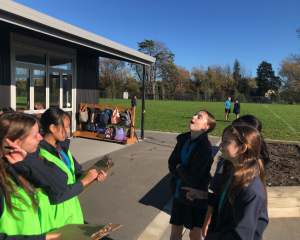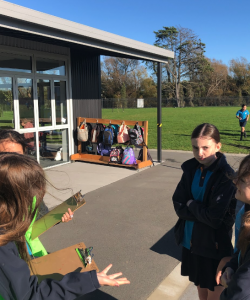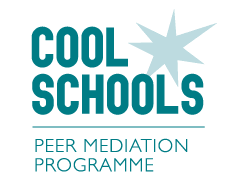Peer Mediation
Ararira Springs has adopted the peer mediation programme as it fits so strongly with our values of being caring, curious and capable. Peer mediators, selected from Year 7/8 classes, undergo a period of training based on the ‘Cool Schools Peer Mediation Programme’ prior to being on duty in the playground.
Peer mediation is an approach to conflict resolution based on solving problems in a win/win way. The children learn how to become active listeners, identify their feelings, make ‘I Statements’ and use all of these skills to resolve any conflicts they may experience at school. This helps children to develop their self-esteem and promotes a safe, happy environment in which they can learn.
Primary skills used by mediators
Active Listening
- Give attention to the speaker (look at him/her, maintain eye contact, don’t fiddle)
- Draw out information by asking questions (what happened next/how did you feel?)
- Give feedback to the speaker (about what was said and feelings.
- Making I Statements
- This is a very helpful way for someone to express how they are feeling, why and what they want to happen.
How to construct an “I” Statement:
- I feel upset (state the feeling)
- When you (state the behaviour)
- Because (state the consequence)
- I would like/I need you to (state the action that they want to happen)
- For example: “ I feel upset when you laugh at what I do because it makes me feel stupid. I would like you to stop laughing at me please.”
It would help your child’s understanding if you can reinforce these skills when resolving conflicts at home. When they show anger or frustration you could ask them to use an ‘I Statement’ to express their feelings and needs.
Children also learn about the actual conflict resolution process. This mediation process can only happen if the children with the problem (disputants) agree to the four mediation rules:
Rules of Peer Mediation
- No interrupting
- No name calling
- Be as honest as you can
- Try to solve the problem
Below are the four key steps the children follow when working through a conflict with the playground peer mediators:
- Defining the Problem:
The Peer Mediators ask the following questions to enable the disputants to share their concerns and listen to each other:
- “Do you agree with the rules?”
- “Who would like to speak first?”
- “What happened?”
- “Is there anything else you can think of?”
- “How did this make you feel?” (disputant is encouraged to use an ‘I Statement’ e.g. I feel….
- when you…. because…. I would like/I need….)
The Peer Mediator repeats the problem and feelings back to this disputant, and then this process is repeated with the second disputant.
- Summarising:
One of the Peer Mediators summarises the overall problem: “So I am hearing the problem is about …”. This ensures everyone understands the actual problem.
- Finding Solutions and Negotiating:
Possible solutions are brainstormed by asking the disputants one of the following questions:
- “What could you do to solve this problem?”
- “What could you do differently next time so that you don’t have this problem?”
- “What do you need to solve this problem?”
- Reaching Agreement:
The Peer Mediators work with the disputants until a solution is reached that both are happy with. The Peer Mediators then congratulate them on reaching an agreement to solve their problem and complete an agreement form which is signed by the disputants. Everyone shakes hands.



The Mediation Process
- Children approach the mediators if they would like help solving their disagreements.
- Mediators remind children of the four rules of mediation
- No interruptions
- No name-calling or put-downs
- Be as honest as you can
- Agree to solve the problem
- Each child gets an opportunity to tell their side of the story, and how they feel about what has happened. Children are reminded and encouraged to use “I feel” statements. The mediator will paraphrase after each child has spoken.
- Each child is then asked what they need to happen to solve the problem. The mediator will explore various choices with them.
- Children agree on a win-win solution and understand what they need to do and when. Children are congratulated and asked to shake hands.
- Details are recorded in a book with a check-back time to ensure everything is going smoothly.
Any disputes or incidents which cannot be dealt with by mediators are referred to a teacher on duty for resolution.
A slideshow with more information about our mediation process.


Recent Comments